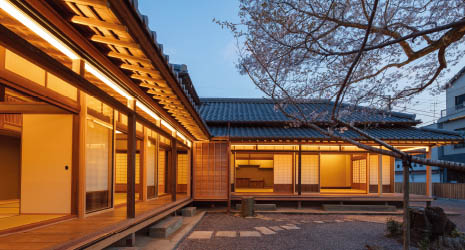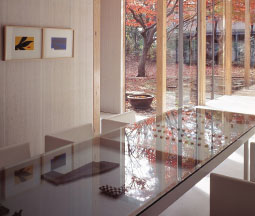Home > Highlighting JAPAN > Highlighting Japan November 2018 > Living In Tune with Nature: Japan's Connection to Wood
Highlighting JAPAN


The Merits of Traditional Japanese Houses: A Perspective from the Engawa
The features and structure of traditional wooden Japanese houses are deeply tied to Japan’s climate, lifestyle and society. Professor Nobuaki Furuya, an architect at Waseda University School of Creative Science and Engineering, shares his thoughts about the influence of wood on people’s lives and the role of the engawa, the wooden porches often seen on traditional houses.
“Old Japanese houses are made of wood because Japan is a country filled with forests, and wood is a very familiar material,” states Professor Nobuaki Furuya, a member of the Faculty of Science and Engineering at Waseda University. “Around the world, people make homes of readily available building materials, such as sun-dried bricks, stone, wood, bamboo and even ice. Houses built with local materials blend in naturally with the climate and culture of the place.” Furuya speaks from the perspective of a professional who’s won many awards, including the Japan Art Academy Prize, the Architectural Institute of Japan Prize for Design, the Yoshioka Award and the JIA Young Architect Award.
“Having experienced disasters such as wars and earthquakes, modern Japanese houses tended to avoid using wood,” Furuya adds. “However, along with improved architectural technologies—especially in terms of fire and earthquake resistance—there is a growing trend to reevaluate wood and reintegrate it into familiar spaces.”
According to Furuya the engawa—a wooden porch that pokes out under thatched roofs distinctive to traditional Japanese houses—is more than just a passageway. It is a buffer zone between wooden rain shutters facing the external environment and sliding paper doors enclosing the interior. Open the shutters and you can feel the wind outside while staying under the roof.
“Sitting on the engawa also makes you visible from the outside, enabling a casual mode of communication, such as having a neighbor greet you across the garden without having to come through the house’s front entrance,” Furuya explains. “Through daily activities such as napping in the sun or enjoying the evening breeze, as well as chatting with neighbors while drinking tea, the engawa allows people to form connections across the wider community.”
Growing up in a large wooden house himself, Furuya has childhood memories associated with the engawa and wooden rain shutters. “As a child, wiping the engawa’s surface and closing all the rain shutters were my chores. I touched the wood in the house every day, and noticed subtle changes such as splinters and the rain shutters not sliding smoothly. By sensing the house’s condition closely, you can take care of any minor damages before they become severe.”
What makes wood so touchable is its warmth, caused by the low surface heat transfer coefficient, says Furuya. “It almost feels as if wood is breathing−a sense that inorganic materials such as cement, iron and glass are unlikely to provoke.” Since wood also regulates humidity, it matches Japan’s warm, humid climate, and its texture and fragrance comfort people. Research shows that influenza’s prevalence is lower in schools built with wood than those built with reinforced steel; trees are known to have a positive health impact on humans, such as reducing stress.
Contemporary Japan is reevaluating wood and traditional buildings. For instance, old rural houses are being renovated and transformed into cafés and local communication hubs. Furuya has worked on architectural projects that optimize wood’s positive attributes, including the renovation and preservation of the Hayashi Residence in Kochi Prefecture’s Sukumo City as well as designing homes using plenty of wooden furnishings. He also creates designs that use high-quality wood from Yoshino, such as cedar and hinoki (Japanese cypress), responding to a request from Nara Prefecture.
In the “Forest Furniture” project, Furuya works with a manufacturing company to deliver wooden furniture to children in city schools who have little chance to interact with nature. “Even in Japan, where forests cover about seventy percent of the land, our urban lifestyle tends to make us forget about their existence. It’s important to remember the forests surrounding us by keeping wood close by.”
Awakening the memories of forests in contemporary Japanese people will ensure that a spirit of appreciation toward them endures.
© 2009 Cabinet Office, Government of Japan








